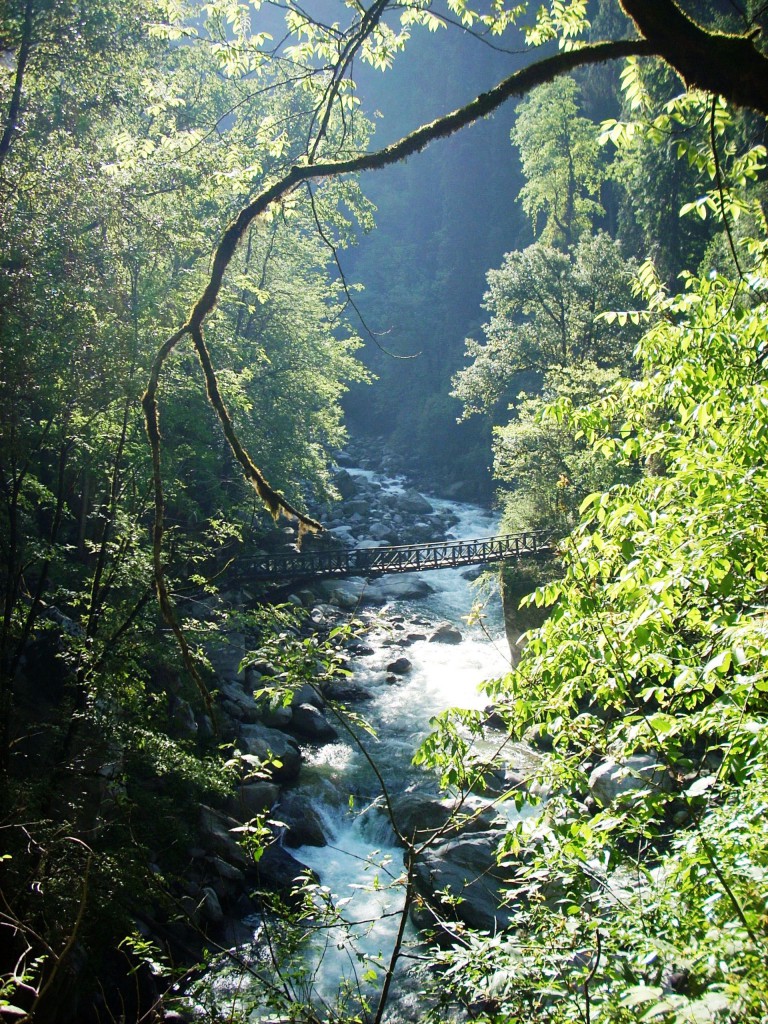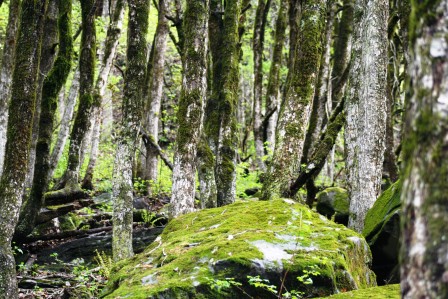Biodiversity / Plants
Overview
The Great Himalayan National Park supports a great diversity of plant life thanks to its wide altitude range and relatively undisturbed habitats. From the lofty pines and spruces and the great, spreading horse chestnuts of the lower valleys, to the dense cushions and prostrate branches of the alpine herbs and junipers, the Park presents an endless variety of vegetation. Although some areas have been modified by grazing, this is one of the few areas of the Western Himalayas where the forests and alpine meadows can be seen in something approaching their original state.
Vegetation Zones
Vegetation occurs in well-defined altitude zones, beginning with the rather open subtropical forests of the lowest valley bottoms, grading into mixed forests of horse chestnuts, evergreen oaks, spruce, and deodhar (cedar). The upper temperate zone is dominated by the rusty-leafed Kharshu Oak, spruce and fir and then into a subalpine zone of birches, stunted firs and rhododendron bushes. Above that, all vegetation is reduced to grasses, herbs and low shrubs, such as juniper. This zonation effect is created by the effect of temperature on plant growth. For this reason, a given vegetation belt tends to be lower on north faces than on south faces. Likewise, moisture loving plants, such as bamboo, ferns and mosses, are more abundant on North faces, where the forest is usually very dense, while south faces support a more open forest with understory of grasses and shrubs.


The subalpine zone is richest in species, followed by the alpine and upper temperate zones. The following vegetation types can be recognized at various elevations in GHNP:
• Temperate broad-leaved forests (2,000 to 3,000m)
• Temperate conifer forests (2,000 to 3,000m)
• Upper temperate broad-leaved and mixed conifer forests (2,500 to 3,500m)
• Sub-alpine (Birch-Rhododendron) forests (3,000 to 3,500m)
• Alpine scrubs (3,500m and above)
• Alpine meadows (3,500m)
• Riverine forests (along the rivers)
• Temperate grassy slopes (2,000 to 3,000m)
• Temperate secondary scrub near village pastures and forest edges.
| S.NO. | Elevation(m) | Vegetation Type |
|---|---|---|
| 1. | <2,000 | Riverine forests (along the rivers); Secondary scrub and forest edges |
| 2. | 2,000-3,000 | Temperate broad-leaved forests; Temperate conifer forests; Temperate grassy slopes |
| 3. | 2,500-3,500 | Upper temperate broad-leaved and mixed conifer forests |
| 4. | 3,000-3,500 | Sub-alpine (Birch-Rhododendron) forests |
| 5. | =3,500 | Alpine meadows |
| 6. | 3,500 | Alpine scrubs |









